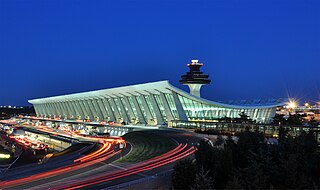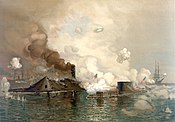The Virginia Portal  Virginia, officially the Commonwealth of Virginia, is a state in the Southeastern and Mid-Atlantic regions of the United States between the Atlantic Coast and the Appalachian Mountains. The state's capital is Richmond and its most populous city is Virginia Beach, though its most populous subdivision is Fairfax County, part of Northern Virginia, where slightly over a third of Virginia's population of 8.72 million live. The Blue Ridge Mountains cross the western and southwestern parts of the state. The state's central region lies predominantly in the Piedmont. Eastern Virginia is part of the Atlantic Plain, and the Middle Peninsula forms the mouth of the Chesapeake Bay. The fertile Shenandoah Valley fosters the state's most productive agricultural counties, while the economy in Northern Virginia is driven by technology companies and U.S. federal government agencies, including the U.S. Department of Defense and Central Intelligence Agency. Hampton Roads is also the site of the region's main seaport and Naval Station Norfolk, the world's largest naval base. (Full article...) Selected article
The Battle of Hampton Roads was the most noted and arguably most important naval battle of the American Civil War from the standpoint of naval technology. It was fought over two days, March 8–9, 1862, in Hampton Roads. The battle was a part of the effort of the Confederacy to break the Union blockade, which had cut off Virginia's largest cities from international trade.
On the first day, the Confederate ironclad ram CSS Virginia (built from the remnants of the USS Merrimack), opposed only by conventional, wooden-hulled ships, destroyed two ships and damaged a third. During the night, the USS Monitor arrived. The two ironclads fought for about three hours, with neither being able to inflict significant damage on the other. The duel ended indecisively, the ships did not fight again, and the blockade remained in place. The major significance of the battle is that it was the first meeting in combat of ironclad warships. It received worldwide attention; Great Britain and France halted further construction of wooden-hulled ships, and others followed suit. The use of a small number of very heavy guns, mounted so that they could fire in all directions, was first demonstrated by Monitor, and soon became standard in warships of all types. Selected biography
Eppa Rixey (May 3, 1891 – February 28, 1963), nicknamed "Jephtha", was an American left-handed pitcher who played 21 seasons for the Philadelphia Phillies and Cincinnati Reds in Major League Baseball from 1912 to 1933. Rixey was best known as the National League's leader in career victories for a left-hander with 266 wins until Warren Spahn surpassed his total in 1959.
Born in Culpeper, Virginia, Rixey attended the University of Virginia where he was a star pitcher. He was discovered by umpire Cy Rigler, who convinced him to sign directly with the Phillies, bypassing minor league baseball entirely. His time with the Phillies was marked by inconsistency. He won 22 games in 1916, but also led the league in losses twice. In 1915, the Phillies played in the World Series, and Rixey lost in his only appearance. After being traded to the Reds prior to the 1921 season, he won 20 or more games in a season three times, including a league-leading 25 in 1922, and posted eight consecutive winning seasons. His skills were declining by the 1929 season, when his record was 10–13 with a 4.16 earned run average. He pitched another four seasons before retiring after the 1933 season. An intellectual who taught high school Latin during the off-season, earning the nickname "Jephtha" for his southern drawl, Rixey was elected to the Baseball Hall of Fame in 1963. This month in Virginia history
Random Virginia articleA random generator will select an article about… 
(note: generator may be slow) Things you can do
Tasks
Selected image Terminal at Dulles International Airport in Loudon County, Virginia, designed by architect Eero Saarinen Did you know -
Fact sheet
State symbols:
Government
Related portalsVirginia topicsSubcategoriesSelect [+] to view subcategories
Associated WikimediaThe following Wikimedia Foundation sister projects provide more on this subject:
Discover Wikipedia using portals |


























